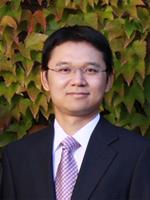Recently, Professor Yang Dayong from the School of Chemical Engineering and Technology published a review paper entitled “DNA functional materials assembled from branched DNA: design, synthesis and applications” in Chemical Reviews (https://pubs.acs.org/doi/10.1021/acs.chemrev.0c00294). PhD candidate Dong Yuhang and Dr. Yao Chi were co-first-authors.
DNA, namely deoxyribonucleic acid, is the central genetic material of the life system. In recent years, with the development of DNA nanotechnology, researchers have understood and studied DNA from the perspective of polymer material. DNA is a unique biological macromolecule, which is composed of four kinds of deoxynucleotide monomers in certain sequences. Beyond traditional polymers, the number and sequence of DNA monomers can be precisely customized on demand, making DNA a polymer with precise and controllable sequences and structures. Moreover, the inherent biological characteristics of DNA in DNA functional material can be maintained. Therefore, DNA functional material is expected to bridge life, chemistry and polymer.

Figure 1. The wide applications of branched DNA in the biomedical field
Most natural DNA molecules are linear and circular, which are difficult to construct complex DNA functional materials. Branched DNA can be delicately designed as isotropic or anisotropic, symmetric or asymmetric structures in a predefined fashion. Moreover, the multi-armed structure of branched DNA can be customized to link with a variety of different functional components. These characteristics make branched DNA as a flexible and universal building unit, which can accurately construct DNA functional materials in a controllable way, and is widely used in biomedical and related fields.
In this review paper, the authors systematically introduced the design principles, synthetic methods and development of application of branched DNA. They first sketched the representative work in the development process, summarized the construction methods of DNA functional materials, and then discussed their characteristics and advantages in different application scenarios. Finally, an insight into the challenges and future perspectives was provided, particularly, the future practical applications. It is expected that scientists in various fields work together to design and synthesize more new materials with unique structures and performances, and develop more exciting applications, so as to jointly promote the development of DNA functional materials.

Prof. Yang Dayong led a research group and mainly focuses on researches about the DNA as biological macromolecular, including biological functional polymers, tumor diagnosis and therapeutics, and synthetic biology.Details about his lab can be found at the website,http://yanglab-dna.com/.
By the School of Chemical Engineering and Technology
Editor: Eva Yin






